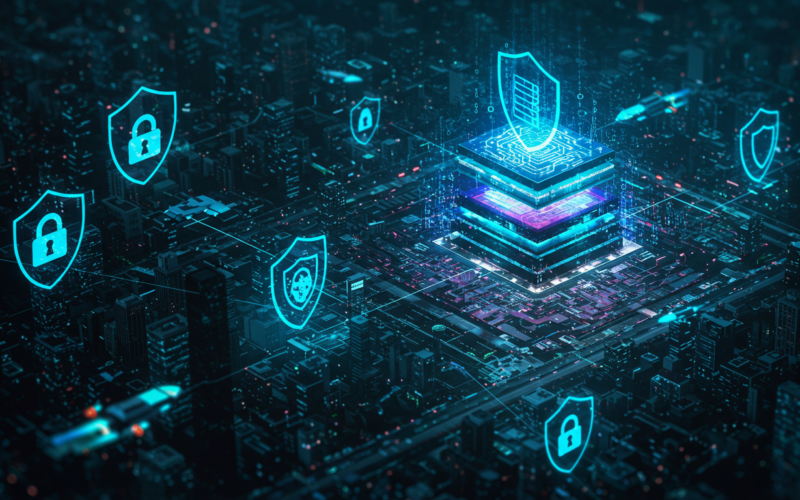Understanding Cybersecurity Threats and Vulnerabilities
In today’s hyper-connected world, cybersecurity threats are a looming menace, evolving swiftly and causing significant concern among businesses worldwide. Common threats such as malware, phishing, and ransomware can create havoc, leading to data breaches and loss of revenue, reputation damage, and legal repercussions. By identifying and cataloging potential weaknesses in their systems, organizations can develop targeted strategies to block potential cyber threats before they can penetrate defenses.
Cybersecurity is not only about protecting data; it’s about maintaining the sanctity of an organization’s entire system infrastructure. Threats can come from various sources, including external hackers or even insiders. Each entry point into a network is a potential vulnerability, emphasizing the need for constant vigilance. Regular scans and audits of digital infrastructures can identify existing or emerging vulnerabilities, allowing companies to apply patches promptly and maintain robust security postures.
Importance of Proactive Cybersecurity Measures
Proactivity in cybersecurity involves anticipating and preemptively countering threats to ensure systems remain secure. Organizations implementing proactive measures can significantly reduce their exposure to cyber threats. Regular vulnerability assessments, penetration testing, and real-time network monitoring are ways businesses can avoid potential risks. Understanding the full scope of these vulnerabilities is pivotal to crafting an effective risk remediation strategy. Furthermore, by staying informed about the latest cyber threats, organizations can tailor their defenses accordingly, optimizing their security framework.
According to guidelines provided by the National Institute of Standards and Technology (NIST), implementing continuous monitoring and assessment can effectively manage cybersecurity threats. This approach allows businesses to detect and respond to incidents rapidly, minimizing potential impacts. By weaving these practices into their regular operations, organizations stand a better chance of maintaining resilience in an ever-evolving threat landscape.
Developing a Comprehensive Risk Mitigation Plan
A comprehensive risk mitigation plan is the cornerstone of an effective cybersecurity strategy. To remain relevant and effective, this plan should be dynamic, evolving with the shifting landscape of cyber threats. Key components include threat identification, impact assessment, and a detailed outline of the steps to mitigate risks. Regular updates and reviews of the plan are essential to accommodate new threats and changing organizational goals.
Strategic planning also involves understanding your organization’s specific needs, including factors such as the types of data you handle, your industry standards, and your global footprint. Such understanding informs tailored risk mitigation strategies that address unique vulnerabilities and threats. Real-life case studies reveal that businesses with well-established risk mitigation plans can better handle and recover from cyber incidents, minimizing potential losses.
Employee Training and its Impact on Cybersecurity
In cybersecurity, employees often play a dual role: they are both a potential risk and a crucial line of defense. Many cyber incidents stem from human error, highlighting the need for comprehensive employee training programs. Such programs should equip employees to identify and respond to phishing attempts, understand proper data protection protocols, and maintain robust password management policies.
The Cybersecurity & Infrastructure Security Agency (CISA) underscores the significance of employee training in preventing cyber-attacks. With the right knowledge and tools, employees can significantly reduce the likelihood of breaches. Frequent and updated training sessions reflecting the latest threats will foster a culture of security awareness, making employees proactive protectors of their organization’s digital assets.
Conducting Regular System Audits and Security Assessments
Regular system audits and security assessments are vital for exposing hidden vulnerabilities that might go unnoticed. These evaluations are not one-time activities but part of an ongoing process to ensure an organization’s security posture remains solid. Audits should be scheduled periodically, particularly following any major updates or changes in infrastructure.
System audits offer critical insights into potential weaknesses within technological infrastructures, aligning security strategies with broader organizational goals. Hiring third-party auditors can provide an objective view of your security measures, offering expert advice and recommendations for improvement. Such independent assessments can be invaluable in ensuring rigorous and comprehensive security policies.
Developing an Incident Response Plan
An incident response plan is a blueprint for effectively managing and resolving security breaches. Even with the best preventative measures, incidents can occur, making it essential to have a responsive strategy to minimize damage and recover swiftly. An effective plan outlines the roles and responsibilities of the incident response team, communication strategies, and recovery timelines.
Real-world examples demonstrate that organizations with well-structured incident response plans to recover more quickly and incur less damage to their reputation and bottom line. By actively learning from past incidents and refining response strategies, businesses can enhance their resilience and ensure they are prepared for potential future breaches.
Leveraging Technology and Tools for Enhanced Security
The modern cybersecurity landscape has advanced tools and technologies designed to fortify defenses. From AI-powered monitoring systems to robust encryption protocols, leveraging these technologies can significantly enhance an organization’s security posture. Regular updates and patches are critical in protecting against known vulnerabilities as cyber threats become increasingly sophisticated.
Incorporating cutting-edge technologies enables organizations to anticipate threats more accurately and respond swiftly. As cyber threats grow in number and complexity, adopting comprehensive technological solutions becomes vital for maintaining a robust cybersecurity framework.
Continuous Improvement and Adaptation in Cybersecurity
The fight against cyber threats is ongoing, necessitating continuous improvement and adaptation in security strategies. Organizations must invest in regular reviews and revisions of their security measures to ensure they are effective in the face of emerging threats. This requires staying informed on global cybersecurity trends and learning from industry peers.
Adaptability is vital; hackers employ ever-evolving techniques, so businesses must adjust accordingly. By cultivating a culture of continuous improvement, organizations not only enhance their ability to defend against existing threats but also prepare for the unknown challenges of the future. Being proactive and resilient is key to ensuring robust cybersecurity measures that safeguard digital assets for the long term.




